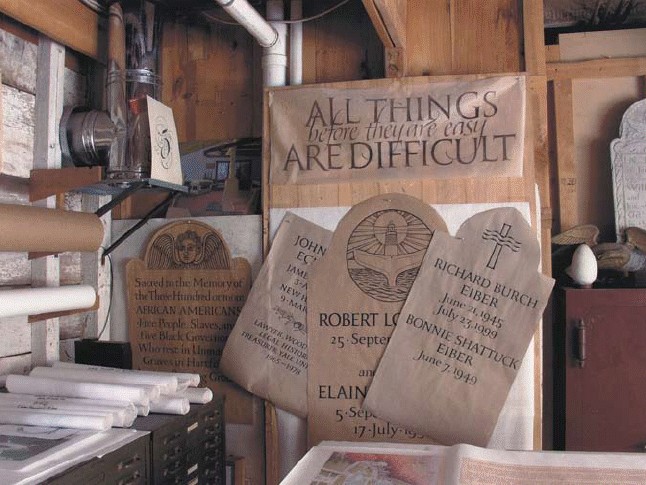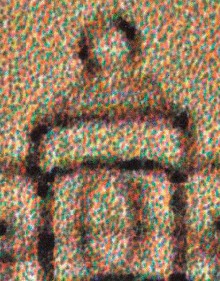- Relief printing
- Intaglio and planographic printing
- Color printing
- Bits and pieces
- Early photography in silver
- Non-silver processes
- Modern photography
- Color notes
- Color photography
- Photography in ink: relief and intaglio printing
- Photography in ink: planographic printing
- Digital processes
- Where do we go from here?
Modern inkjet printing

Inkjet print. Richard Benson. All Things Are Difficult Before They Are Easy. 1998. 7 1/4 x 9 5/8" (18.4 x 24.5 cm). The Museum of Modern Art, New York. Gift of Richard Benson © Richard Benson. Using stochastic dot patterns in the subtractive primaries, the inkjet printer has come to dominate amateur and professional photographic printing and it produces the overwhelming majority of today’s digital prints. This picture was made with an early Olympus.
Even though the inks cost a lot, desktop inkjet printers are absolutely wonderful. We need to remember that all the old chemical materials were even more expensive, due to the presence of silver in their coatings. With the new digital printers we become frustrated at the cost of the inks but conveniently forget that we use these machines to make far more prints than we ever made in the darkroom. Had we tried back then to predict what printing device would come out of the computer age, we would never have dreamed up these printers. They are inexpensive, rarely break, print rapidly, and make prints that look as though they have the full tonal and color range of an actual chemical print. This last attribute comes because the technology of the print head has made extraordinary strides.

Detail of Inkjet print. Richard Benson. All Things Are Difficult Before They Are Easy. 1998. 7 1/4 x 9 5/8" (18.4 x 24.5 cm). The Museum of Modern Art, New York. Gift of Richard Benson © Richard Benson. As the inkjet printer evolved, the dot structure became finer; this detail has been enlarged approximately twelve times from the print.
On the best machines these tiny jets, grouped for each color, are able to put down droplets of ink at a resolution of 2,880 per linear inch, which means that a single square inch, if fully covered, could hold over eight million separate deposits. The computers themselves—their memories and processors—have all grown in speed and data-handling capacity to match the ability of the printers to lay down ink. We tend to ignore the miraculous technological path that is traveled every time we click a computer’s print button. Inkjet prints do have some problems. In the beginning, prints made this way tended to fade badly, but by this time (2007) the dyes and pigments used in the best inks are even more permanent than those in the older chemical chromogenic print.
There is still a fragility to the prints, partly because they are sensitive to bad chemistry in the air, but also because the ink deposits are physically delicate. The old chemical prints could be manhandled and still remain intact—a pile of silver prints could be shuffled around and perhaps some surface scratching would occur, but the prints would probably still be OK. Do this with a pile of inkjet prints and very soon every one will be ruined. This is such a problem that when I print my own pictures and manage to get a good one, I immediately put it in an overmat, reversing my forty-year-old habit of storing photographs in unprotected piles. You would think that a replacement could be made simply by pressing the print button again, but computers, software, printers, and inks change so rapidly that one never knows if a good print can be made again. Perhaps the most irritating problem with the inkjet prints is that they look very different under different viewing lights. A print that is fine under tungsten light turns quite green under daylight and might shift to red when viewed under fluorescent light. The ink-makers are gradually solving this problem, called “metamerism,” but even today a great-looking inkjet print can take on a distressing color cast when viewed under different conditions from those for which it was made.

